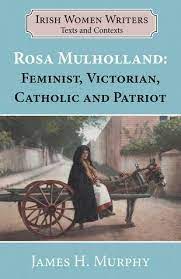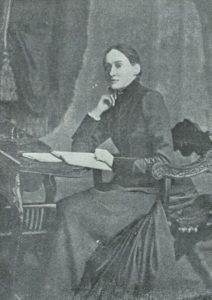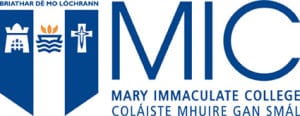Rosa Mulholland republished on the centenary of her death
James H. Murphy
Rosa Mulholland, Lady Gilbert (1841-1921), died in the spring of 1921. Spring 2021, the centenary of her death, marks the publication of Rosa Mulholland: Feminist, Victorian, Catholic and Patriot, published by Edward Everett Root and edited by James H. Murphy. This reader of Mulholland’s work is part of the Irish Women Writers: Texts and Contexts series, whose editors are Kathryn Laing and Sinead Mooney, co-founders of the Irish Women’s Writing Network 1880-1920. The book consists of an introduction and bibliography of Mulholland’s work, and seven selections from her work. These have been chosen on the basis of their status as significant interventions into various issues of importance and also for being illustrative of the variety of topics she addressed at different points in her career.
Read MoreEmerging Voices 1: Nora Moroney

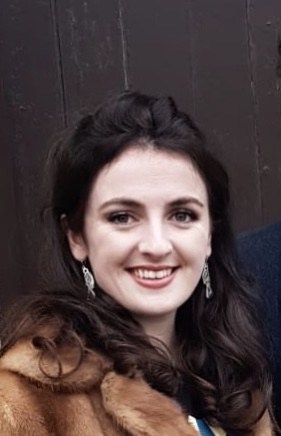
Nora Moroney
Nora Moroney has a research specialism in Irish literary cultures and their influence on and connection with the late-Victorian British periodical press. Her publications to date include articles on Irish women journalists in the Victorian Periodicals Review, focusing particularly on the writings of Alice Stopford Green and Charlotte Grace O’Brien, and on Belfast newspapers in The Edinburgh History of the British and Irish Press, Volume 3. Funded by the Irish Research Council Enterprise Partnership Scheme, she is currently conducting research into ‘The Benjamin Iveagh Library: A Cultural History of Collecting in Twentieth-Century Ireland’, a project that focuses on a private book collection based at Dublin’s Farmleigh House in Phoenix Park. Prior to her IRC postdoc, Moroney held a research post in the Manuscript Department of the National Library of Ireland where she worked on collections of nineteenth-century estate papers and twentieth-century literary archives.
Read MoreFrom Bushy Park to Elsinore: Noëlle Ffrench Davies
Mary Turley-McGrath
In January 1924, a young Irish woman arrived in Denmark to take up her position as a lecturer in the International People’s College in Elsinore. Born into a wealthy farming background in Co. Roscommon, she could have opted for a leisurely life. However, her dynamic spirit and determined personality set her on a diverse and exciting path. She had an ambition: to learn about the Danish Folk High-School system and to establish a similar one in Ireland.
Read MoreResearch Pioneers 13: Kathryn Laing
Kathryn Laing has a career-long research expertise in women’s writing and Irish women’s writing in particular. Her wide-ranging publications focus on the works of Hannah Lynch, Rebecca West, Virginia Woolf, and Edna O’Brien. Together with Faith Binckes, she’s co-written the study Hannah Lynch, 1859-1904: Irish writer, Cosmopolitan, New Woman (2019), and, with Sinéad Mooney co-edited Irish Women Writers at the Turn of the Twentieth Century: Alternative Histories, New Narratives (2020). You can read the introduction to that volume here.
Her service to the field most recently bore fruit in the co-founding of the Irish Women Writers Network 1880-1920 that has the ambitious aims of bringing together scholars with common research interests, providing a virtual platform that offers research and teaching resources, and making the latest research findings accessible to students in the form of a new network-associated series of full-length works issued through EER publishing.
Read MoreAway with the Fairies: Irish Folklore and Fin-De-Siècle Motherhood in Katharine Tynan’s Ballads and Lyrics (1891)
Sadbh Kellett, University of St. Andrews
The Irish writer Katharine Tynan was remarkable in her personal and literary embodiment of the ‘New Woman’. An educated member of Dublin’s Catholic middle-class, Tynan’s formidable literary career resulted in her financial independence, which she maintained alongside her nationalist political activism, all the while playing the part of dedicated wife and mother. As Aurelia L.S. Annat suggests:
Read MoreRockmahon, Blackrock Co. Cork: Family home of Novelist and Short Story writer Ethel Colburn Mayne (1865-1941)
Elke D’hoker, University of Leuven
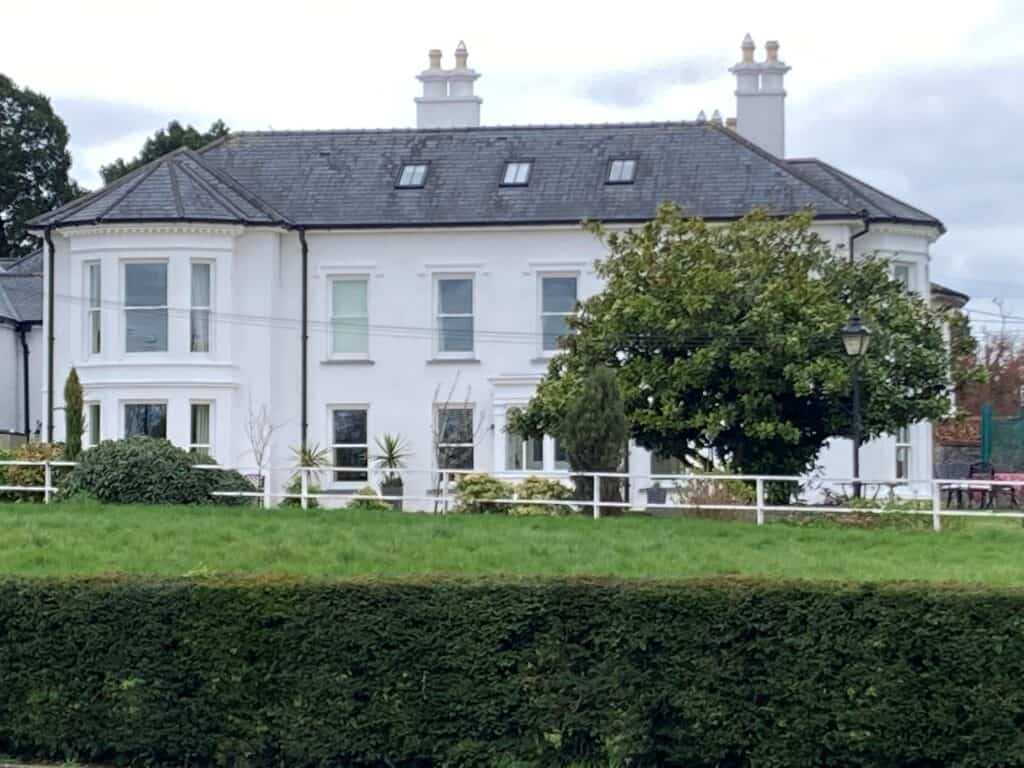
This is Rockmahon[i], one of the original nineteenth-century properties along Castle Road in Blackrock, Cork. Built around 1820, the house is adjacent to the river Lee. It faces north towards the docks and the Tivoli hills and east towards Blackrock Castle. From 1894 to 1905, Rockmahon was the home of the writer Ethel Colburn Mayne, whose literary career took off in 1895 when a story of hers was accepted in The Yellow Book. Although Mayne is little known today, she went on to build an impressive and versatile career as a novelist, short fiction writer, biographer, reviewer and translator.
Read MoreChambers’s Journal and Irish Women Writers at the Fin de Siècle: The Case of Magdalen Rock
Alexis Easley, University of St. Thomas
From its founding in 1832, Chambers’s Edinburgh Journal strove to reach a national audience. This meant employing a corps of writers who could speak to both national and regional concerns. As David Masson noted in 1851, the Chambers brothers employed ‘Englishmen and Englishwomen, Irishmen and Irishwomen, as well as countrymen and countrywomen of their own, writers of the highest celebrity as well as aspirants whom they have helped to encourage’ (186). As I have shown elsewhere, this list of ‘aspirants’ included a large number of women writers between 1839 and 1855. The firm’s ledgers from this period reveal the identities of 136 women who contributed some 1,048 essays, stories, and poems to the journal. A disproportionately large number of these women – about 21% – were Irish.
Read MoreHope and Hunger in a Stricken Land: Jane Wilde and the Great Hunger
Christine Kinealy, Director of Ireland’s Great Hunger Institute at Quinnipiac University
This is an extract from Professor Christine Kinealy’s article ‘Hope and Hunger in a Stricken Land: the Wilde Family and the Great Hunger’ in Reading Ireland, issue 12, edited by Adrienne Leavy.
Speranza (Jane Elgee) and William Wilde, affluent members of the Protestant Ascendancy in Ireland, were both champions of the poor during the Great Hunger. Following their marriage in 1851, they achieved a celebrity status in their native country and an enviable life-style. William, a brilliant eye and ear doctor, was named as Oculist-in-Ordinary to Queen Victoria and, in 1864, was knighted for his services to the Empire, particularly for his work on various Irish censuses. Jane and William, who resided in the prestigious Merrion Square, attended many vice regal functions at Dublin Castle, the symbol of British rule in Ireland. Yet this privileged couple, in multiple ways, advocated for the Irish poor and they provided some of the most searing criticisms of the British government’s response to the Famine. Their second son, Oscar, would later use his own skills to challenge British rule in Ireland.
Read MoreThe Unravelling of Old Certainties: Elizabeth Bowen and the Search for Stability in Times of Flux
Orlaith Darling, Trinity College Dublin
In the U.S. post-script to The Demon Lover and Other Stories (1945), Elizabeth Bowen expresses the human yearning for security-in-placement:
The search for indestructible landmarks in a destructible world led many down strange paths […] The violent destruction of solid things, the explosion of the illusion that prestige, power and permanence attached to bulk and weight, left us all, equally, heavy and disembodied.[1]
Revisiting this quotation, I am struck by its relevance to the times we inhabit. While Bowen wrote the above amid the devastation of the London Blitz, the same sentiment applies to the dystopian shape of our pandemic-wracked globe. Indeed, for many of us, as for Bowen, the home has become a singular place of refuge – confined to our four walls, the importance of the home as a locus of safety (from disease or destruction) has never been more apparent than now.
Read MoreMemory, Landscape and Loss in Irish Emigrant Women’s Memoirs

Dr Sarah O’Brien, Mary Immaculate College, Limerick
In October, a woman uploaded a photo to her social media account. Taken that morning, it showed her at the edge of a hospital bed, head held in her hands. Her body, partly exposed by a drooping towel, was doubled over in grief. She had just suffered, or was in the process of suffering, a miscarriage.
Behind her, a female medic stood at a computer monitor, facing away from the camera. Against the contorted shock on the face of the patient, the medic’s gaze seemed composed, mysteriously impassive. Clinical indifference was not in question here. Rather, what the image captured was the disorientating paradox of miscarriage: its devastation and its ubiquity.
Read More